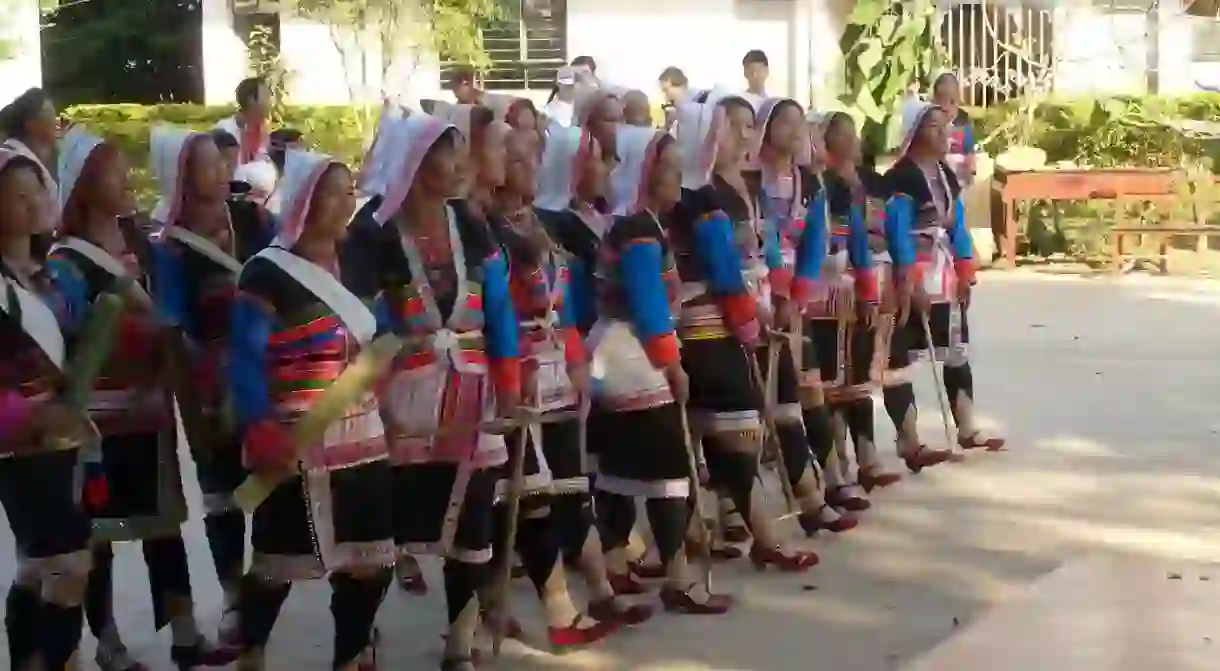An Introduction to China's Jino People

Though few have heard of the Jino, this small ethnic group represents one of the last strongholds of egalitarian, matriarchal culture in China.
The Jino, sometimes spelled Jinuo, are one of China’s smallest officially recognized ethnic minority groups and the last one to gain such a status, being granted the designation in 1979. Prior to 1979, the Jino were categorized as a subset of the Dai, due to the two ethnic groups’ overlapping homelands. The name Jino is taken from the matriarchal society that is ingrained in Jino heritage. “Ji” means uncle and “No” means following being. Together, the name indicates the importance of the maternal uncle in society.
Homeland
The Jino, like the Dai, are native to Xishuangbanna Dai Autonomous Prefecture in the extreme south of Yunnan. While the Chinese Dai number well over one million, the Jino have a population just over 23,000. They are concentrated primarily in Jinoluoke Township in Jinghong, Xishuangbanna. Jinoluoke is known for its subtropical rain forest climate, conducive to the cultivation of Pu’er tea. The area is also home to some of China’s only wild elephants, as well as monkeys, birds, and mineral resources.

History
Though the Jino and Dai are two very distinct groups, it is believed that the two may share a common ancestor in the ancient Qiang. The Jino themselves tell a different story, however. In their version of events, the world was created by the goddess Amoyaobai, who separated her human creations into the Han, Dai, and Jino. Later, during the Three Kingdoms period, soldiers of General Zhuge Liang got left behind in the dense rain forest home of the Jino after oversleeping and remained there, intermarrying with Jino women.
Whether the Jino’s oral history of their people stands up to fact is unlikely; however, it is not debatable that their society remained matriarchal for most of their history. At a certain point, following the introduction of iron tools and weapons to the Jino, a militarized branch broke out and separated the Jino into the Citong patriarchal village and the Manfeng matriarchal village. The two villages have since multiplied, but each remains loyal to either the Citong or the Manfeng traditions.
Changes came to the society in 1954, when the nascent People’s Republic of China sent relief supplies to the Jino’s remote homeland. After gaining the approval of village elders, the Communists helped institute democratic reforms to put an end to what they saw as outdated institutions.
Today, most Jino still live in their ancestral homeland, but the nature of their modern lives is not so different from that of any other Chinese ethnic group.

Culture
Still, the Jino hold on to special traditions that keep them unique.
Jino society is completely egalitarian, with hunters dividing meat equally between adults, children, and even newborns alike. Sexually, the Jino are quite open-minded. Premarital sex is not frowned upon, and is often encouraged in the form of special houses built for unmarried men and women to spend the night together. If a woman gives birth to a child out of wedlock, neither the mother nor the child is looked down upon. Still, marriages are expected to be monogamous.
Linguistically, modern day Jino speak Mandarin, but some cling to the Jino language, which is characterized as Tibeto-Burman. The language does not have a written script.
Notably, tooth painting is one of the Jino cultural practices still in some form of existence today.














